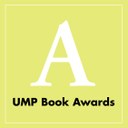Huffington Post: What's in a Sex?
Every probing into the past is illuminating to the present. Applying our intuitions to understand past practices is rewarding but exploring history to make better sense of our present concerns is even more fulfilling. History is not merely a vacuum, a reality in its own shell, a lived away period - it is more a piece of the jigsaw of human life, an essential abstract of the human continuum. The perspective of historical knowledge is always illuminating, virtually in any dimension, including ... sex.
With all the exposure that the Internet provides, "sex" is as mundane a word today as "bread" and "water". Mind, I say *word*. It is remarkably absent from the language until the very sunrise of the 20th Century. These days, with all this freedom of speech, we use the word "sex" as freely as ever. But how did people refer to sex before the word "sex" developed the default meaning (as different from gender) that we know today? How did they talk about sex before "sex"?
Highly qualified academics have recently joined to produce an engaging book called Sex before Sex: Figuring the Act in Early Modern England. The academic profile of the book should not put off the general reader. It is a fascinating collection of insightful essays on sex, sexuality and what counted as sex in Early Modern England. The authors show how a retrospect into the Early Modern period is not an end in itself, a sheer academic pleasure - but is ultimately bound to shed light upon our modern perceptions and understanding of ourselves and our universe.
By: Annie Martirosyan
Story Date: 2013-05-30T00:00:00



